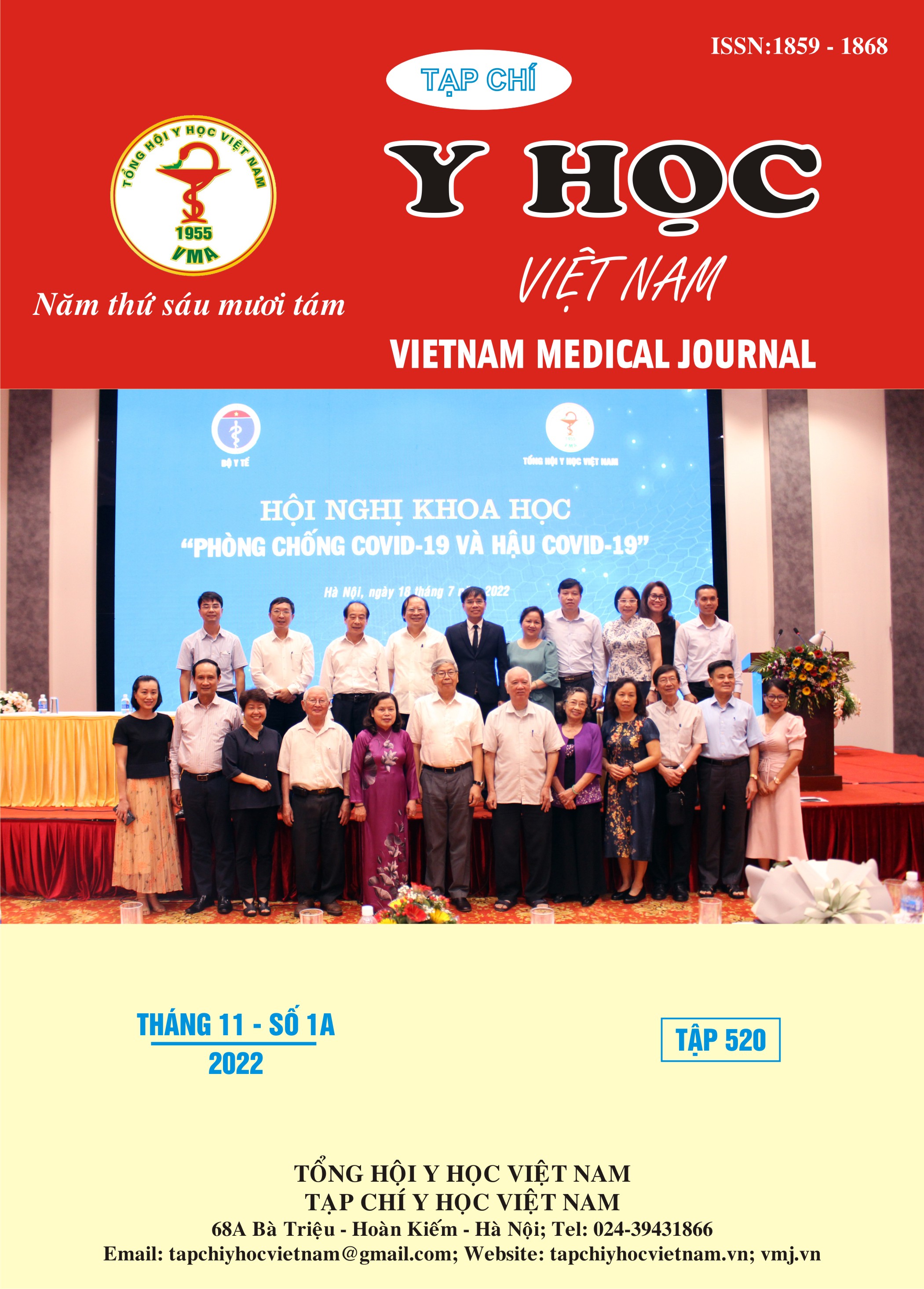DESCRIBE SOME CLINICAL, SUBCLINICAL CHARACTERISTICS OF III-IVA,B STAGE ORAL CAVITY CANCER AND EVALUATE VMAT RADIATION PLANNING AT NATIONAL CANCER HOSPITAL
Main Article Content
Abstract
Objectives: To describe some clinical and subclinical characteristics of oral cavity cancer patients with III-IVA,B stage and to evaluate VMAT radiation plan. Materials and method: Uncontrolled clinical trials in 46 patients diagnosed with III-IVA,B stage oral cavity cancer at the Head and Neck Radiotherapy Department – National Cancer Hospital from September 2018 to June 2022. Results: The average age was 54,83 ± 9,78 years [27-74], male patients accounted for 84,8%. The lesion was mainly located on the tongue, accounting for 47,8%, followed by the floor of the mouth, accounting for 21,7%. Pain when chewing and having cervical lymph node are two most common symptoms with the rate of 95,7% and 34,85, respectively. Stage III, IVA, IVB are 10,9%, 82,6% and 6,5%, respectively. PETCT changed the stage in 17,4% of patients. Evaluation of VMAT radiation plan: the dose into the radiation volumes and the organ at risk meet the requirements according to the recommendations. Conclusion: Oral cavity cancer stage III-IVA,B is common in middle-age men. The most common of tumor location is tongue with clinical symptoms is pain on chewing and having cervical lymph node. PETCT has a role to help accurately assess the pre-treatment stage. The VMAT radiotherapy plan met the recommend standards.
Article Details
Keywords
oral cavity cancer, III-IVA,B stage, 3D radiation, Volumetric Modulated Arc Therapy
References
2. Gupta N, Gupta R, Acharya AK, et al. (2016). Changing Trends in oral cancer - a global scenario. Nepal J Epidemiol. 6(4), 613–619.
3. National Comprenhensive Cancer Network (NCCN) (2022), head and neck cancer.
4. Joaquín J. Cabrera-Rodríguez. (2016). The role of radiotherapy in the treatment of oral cavity cancer, Plast Aesthet Res. 3, 158-66.
5. Reema Goel, William Moore, Baran Sume, et al. (2017). Clinical Practice in PET/CT for the Management of Head and Neck Squamous Cell Cancer. American Journal of Roentgenology. 209(2), 289-303
6. Hàn Thị Vân Thanh (2013), Nghiên cứu điều trị ung thư biểu mô khoang miệng có sử dụng kỹ thuật tạo hình bằng vạt rãnh mũi má, Luận án tiến sĩ Y học, Trường Đại học Y Hà Nội, Hà Nội.
7. Wang KH, Song BH, Gilde JE, et al. (2018). Diagnostic Pathway of Oral Cavity Cancer in an Integrated Health Care System. Perm J. 22, 17–152.
8. Dhanuthai K, Rojanawatsirivej S, Thosaporn W, et al. (2018). Oral cancer: A multicenter study. Med Oral Patol Oral Cir Bucal. 23(1), 23–29.
9. Judith Alvarez-Moret, Fabian Pohl, Oliver Koelbl, et al. (2010). Evaluation of volumetric modulated arc therapy (VMAT) with Oncentra MasterPlan for the treatment of head and neck cancer. Radiation Oncology 2010. 5:110


